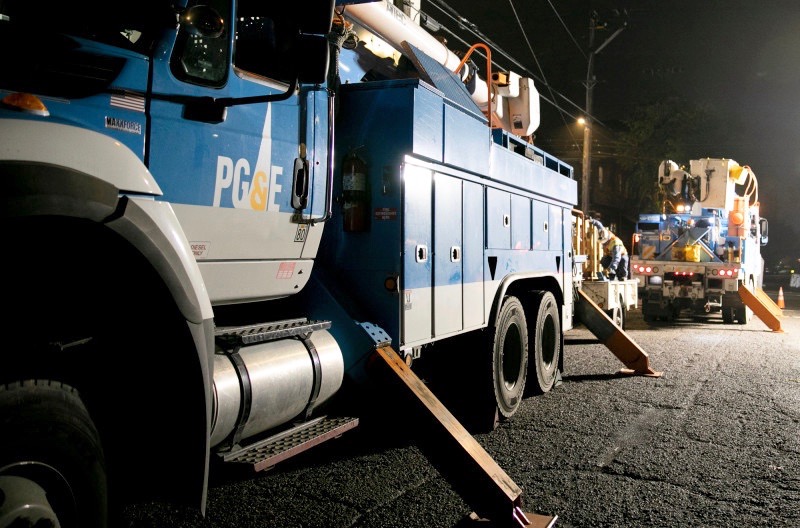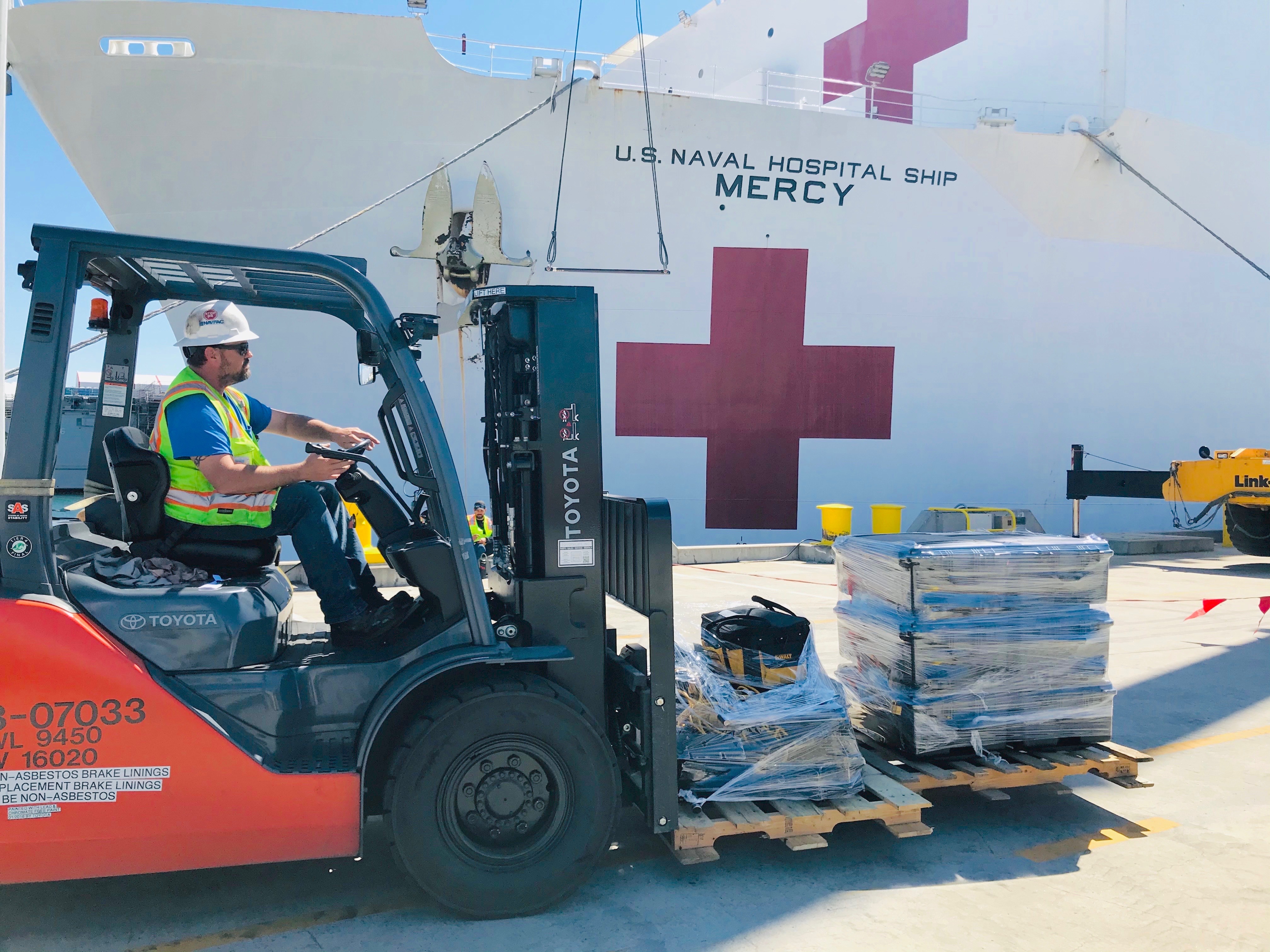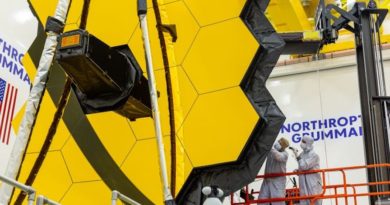Daily Business Report-March 23, 2020
U.S. Navy photo by Senior Chief Mass Communication Specialist Mike Jones
Hospital ship USNS Mercy to deploy to free up
shore-based hospitals for coronavirus patients
Steve King, a Naval Facilities Engineering Command Southwest forklift driver, prepares to deliver pallets during a supply load aboard the Military Sealift Command hospital ship USNS Mercy at Naval Base San Diego on Saturday.
Mercy is preparing to deploy in support of the nation’s COVID-19 response efforts and will serve as a referral hospital for non-COVID-19 patients currently admitted to shore-based hospitals. This will allow shore-based hospitals to use their Intensive Care Units and ventilators for COVID-19 patients.
_______________________________

Newsom and PG&E strike deal
to end company’s bankruptcy
By Judy Lin, CalMatters
In the middle of a pandemic, Gov. Gavin Newsom signed off on Pacific Gas and Electric Corp.’s $57.65 billion bankruptcy reorganization plan Friday, after winning shareholder concessions and governance changes that he declared would be “the end of business as usual” for the state’s largest utility.
The company agreed to a number of changes, notably no shareholder dividends for three years and new oversight and enforcement mechanisms to redirect PG&E if it isn’t reaching safety or climate change goals. The deal marks the end of a yearlong battle with a governor who had threatened a public takeover unless executives changed the corporate culture and investors agreed to take a financial haircut.
PG&E chief executive and president Bill Johnson said the company now hopes to exit Chapter 11 bankruptcy in a timely manner. Under state law, PG&E needs to do so by June 30 to access a $21 billion state fund for compensating victims of wildfires, which is a key component of its financing plan.
“We now look to the California Public Utilities Commission to approve the plan through its established regulatory process, so that we can exit Chapter 11, pay wildfire victims fairly and as soon as possible, and participate in the state’s wildfire fund,” Johnson said in a written statement.
PG&E filed for bankruptcy protection in January 2019, after being held financially responsible for a series of deadly and destructive wildfires in 2017 and 2018. Though many victims, insurers and bondholders had signed off on a reorganization plan, Newsom was the last holdout — worried that it would leave the company with too much debt and not enough changes.
In previous objections, he demanded the company oust its board and replace it with a majority of Californians, including experts on utility safety. Newsom also wanted a provision that the firm’s operating license be transferred to the state or a third party when required.
After months of behind-the-scenes wrangling, both parties agreed to a number of changes, notably:
• No dividends to be paid to shareholders for the next three years, which amounts to about $4 billion forfeited.
• About $7.6 billion in shareholder assets would be used to repay or refinance utility debt.
• A board and executive team is in place that will prioritize safety.
• State regulators gain greater oversight and enforcement powers.
• A state observer will monitor PG&E’s safety goals before the company exits bankruptcy.
•A transition officer will be appointed if the bankruptcy process is delayed.
“This is the end of business as usual for PG&E,” Newsom said in a written statement.
“Through California’s unprecedented intervention in the bankruptcy, we secured a totally transformed board and leadership structure for the company, real accountability tools to ensure safety and reliability and billions more in contributions from shareholders to ensure safety upgrades are achieved,” the governor said.
In addition, the state will have legal authority to demand further changes. “We aren’t taking our foot off the gas,” Newsom said.
CalMatters.org is a nonprofit, nonpartisan media venture explaining California policies and politics.
_______________________________
Thermo Fisher ships first COVID-19 tests
Thermo Fisher Scientific has shipped the first batch of government-authorized coronavirus tests and begun its “dramatic ramp up” in production. The company, which has offices in Carlsbad, currently has 1.5 million tests in stock, and aims to increase production over the course of April to 5 million tests per week.
_______________________________
Inovio Pharamaceuticals fast-tracks
human trials for COVID-19 vaccine
Inovio Pharmaceuticals’s San Diego lab, which hopes to fight the coronavirus pandemic with its experimental DNA-based vaccine, plans to start human trials in April. The company aims to have 1 million doses ready for distribution by the end of the year.
_______________________________
Hologic, Quidel get emergency
approval to produce COVID-19 tests
Hologic and Quidel Corp. are the latest San Diego firms to receive fast-track approval from the U.S. Food and Drug Administration to supply molecular assays lab tests to detect COVID-19. By the end of this week, government officials expect 1.9 million tests should be available.
_______________________________
UCSD Jacobs School of Engineering ranks #9 in U.S.
UC San Diego’s Jacobs School of Engineering ranked ninth in the country in US News’ Rankings of Best Engineering Schools. With $212 million in federal, state, and industry research support in 2019, it also ranks first among all public engineering schools for research expenditures per faculty member.
_______________________________
Local Business Snapshot
What a few local restaurants are doing in the face of the coronavirus pandemic:
- Old Town mezcaleria Tahona has decided to temporarily close during this time, including not offering takeout, as a way of doing its part to help minimize risks to their staff and the public. Founder Amar Harrag has set up an Indiegogo fundraiser page at www.indiegogo.com/projects/mezcal-love#where the public can help support Tahona employees through the purchase of playful, branded t-shirts and pre-sale mezcal and taco tasting experiences. Tahona will give 100% of the fundraiser’s proceeds to Tahona employees.
Tahona: 2414 San Diego Ave., San Diego, CA 92110.
- Newly opened and family-owned artisanal gelateria Zero Gelato has postponed its grand opening celebratory event, which was slated for April 4. Stay tuned for a new date following the widespread re-opening of local restaurants.
During this time, Zero Gelato is offering pints of its Italian-style gelato for takeout from Monday through Thursday from 3 to 7 p.m. and from Friday through Sunday from 2 to 7 p.m. Zero Gelato is also fulfilling delivery orders through GrubHub during these hours.
Zero Gelato, 3331 Adams Ave., San Diego, CA 92116.
_______________________________
Qualcomm Foundation donates $1 million
to COVID-19 Community Response Fund
The San Diego Foundation announced the Qualcomm Foundation has donated $1 million to the San Diego COVID-19 Community Response Fund. The donation includes $500,000 in immediate food assistance to the Jacobs & Cushman San Diego Food Bank and San Diegans in need. The grant will allow the Jacobs & Cushman San Diego Food Bank to ensure vulnerable populations in our community get the food assistance they need during this critical time. All 200 of its food distribution sites and network of 500 nonprofit partners with feeding programs will continue to provide food to seniors, children and people in need affected by the Coronavirus pandemic, and the Food Bank will remain open and operating throughout the COVID-19 crisis.




